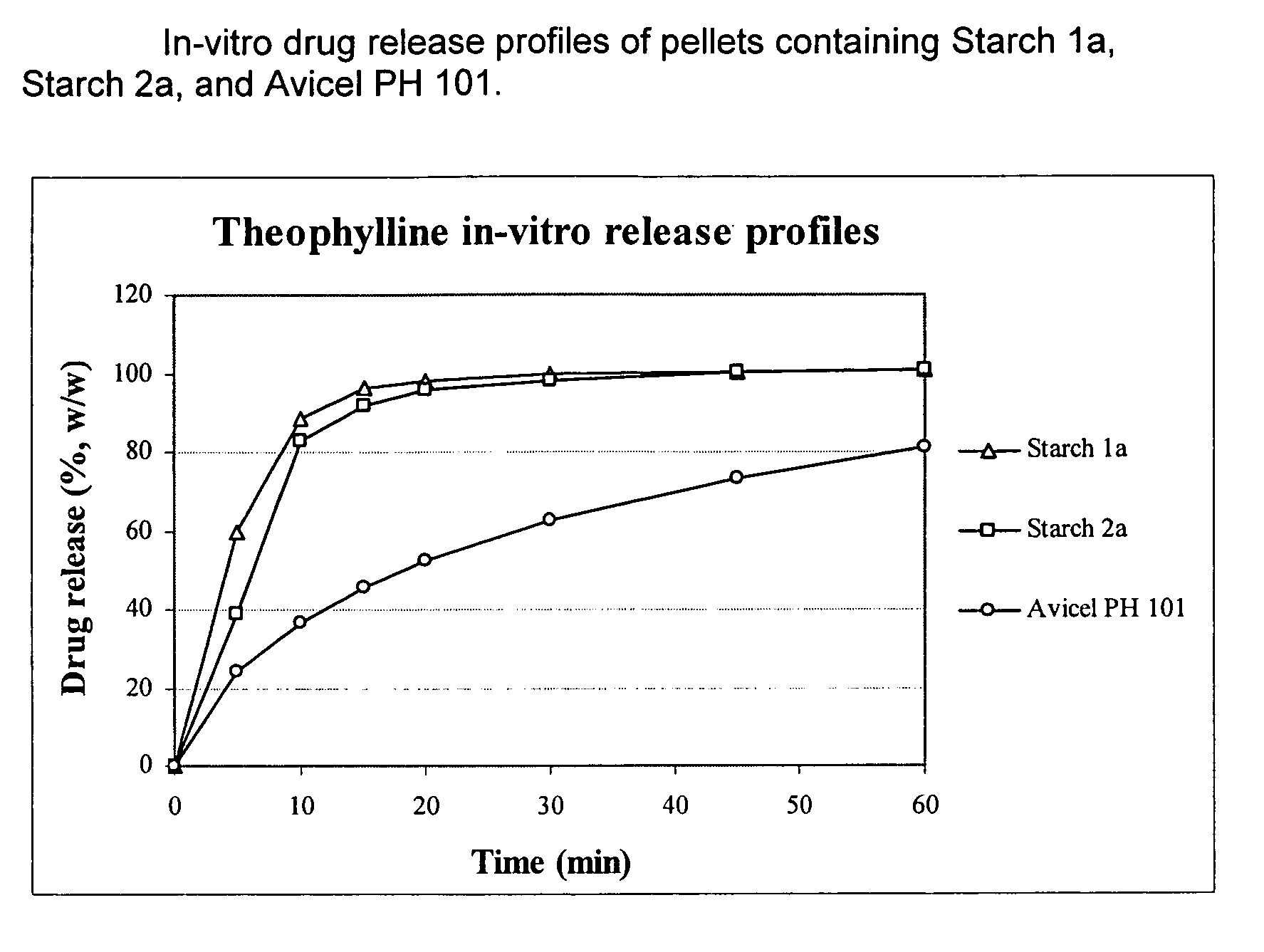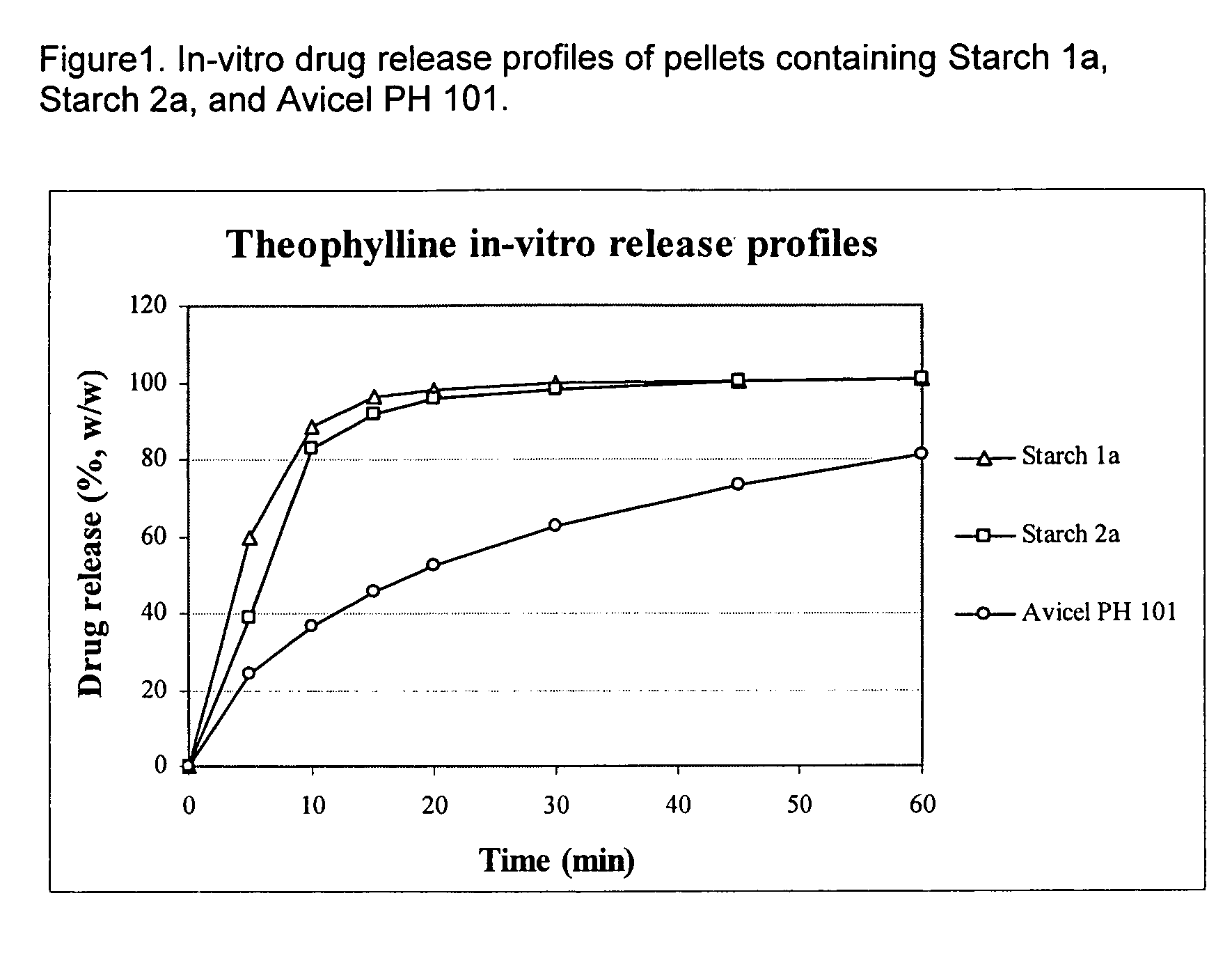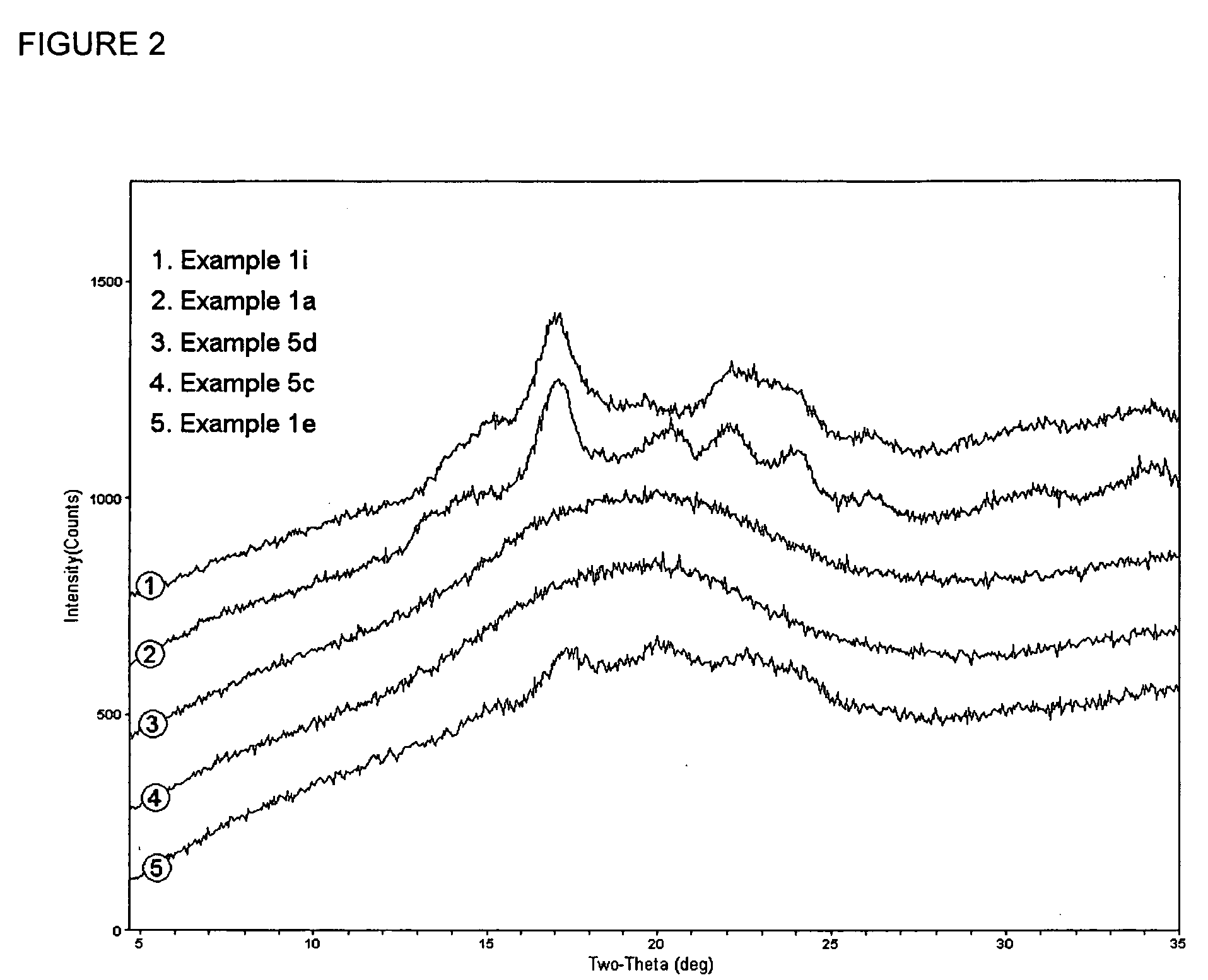Use of debranched starch in extrusion-spheronization pharmaceutical pellets
a technology of extrusion and spheronization, which is applied in the direction of heterocyclic compound active ingredients, meat/fish preservation by drying, drug compositions, etc., can solve the problems of difficult to find a replacement for microcrystalline cellulose, insufficient use with certain active ingredients, and high cost of microcrystalline cellulos
- Summary
- Abstract
- Description
- Claims
- Application Information
AI Technical Summary
Benefits of technology
Problems solved by technology
Method used
Image
Examples
example 1
Preparation of the Debranched Starch Using Pullulanase and High Amylose Corn Starch
[0086] a. HYLON® VII starch, a high amylose corn starch commercially available from National Starch and Chemical Company (Bridgewater, N.J.) was slurried into water and jet cooked at temperatures between 149-160° C. to fully gelatinize the starch. The starch cook was then held at a constant set temperature of 60° C. The starch dispersion was diluted to a solids range of 10% to 20%. The pH was adjusted to about 5.0, with a solution of 3:1 water / concentrated HCl. Promozyme 400 L, a commercial preparation of pullulanase, a product of NOVOZYMES, Danbury Conn., was added when the starch temperature was about 60° C. and the enzyme was allowed to debranch the starch for 48 hours, and then was heat deactivated by raising the temperature at which point the solution was allowed to anneal. The starch was then neutralized to a pH of 5.0-5.5 with 3% NaOH in water. The debranched starch was then isolated by spray ...
example 1a
h. repeated except the enzyme was pH deactivated by lowering the pH to about 3.0 with a solution of 3:1 water:concentrated HCl for 30 minutes.
[0090] i. HYLON® VII starch, a high amylose corn starch commercially available from National Starch and Chemical Company (Bridgewater, N.J.) was slurried into water at around 20% solids and the pH is adjusted to around 4.0 with 3% NaOH and jet cooked at temperatures between 160-166° C. to fully gelatinize the starch. The solution of cooked starch is cooled to around 55° C. and then isoamylase a commercial debranching enzyme obtained from Hayashibara (Japan) and the starch was allowed to debranch for 18 hours while maintaining the temperature at 55 C. The pH was adjusted as needed to around 5.0 with 3% NaOH. The temperature was then raised to around 91-96 C. in order to deactivate the enzyme and allow for annealing of the starch. The starch was then cooled to around 55 C. and the starch was isolated as a powder using spray drying.
example 2
Preparation of the Debranched Starch Products Using Isoamylase Debranched Waxy Maize Starch
[0091] a. Two kilograms of acid converted waxy maize starch was slurried in 5.4 liters of water. The pH of the slurry was adjusted to 4.0 by adding 3:1 water:hydrochloric acid (HCl). The slurry was jet-cooked with full steam at 310-315° F. (154.4-157.2° C.) and 80 psi (5.52×105 Pa) backpressure. The cooked starch solution was put into a reaction container in a 55° C. water bath. 0.2% (wuwt) isoamylase (commercially available from Hayashibara Inc. Japan) based on starch was added to start the debranching reaction. Reaction conditions were maintained at 55° C. and pH 4.0 during the entire reaction.
[0092] After the reaction proceeded for 5 hours, the pH was adjusted to 5.5 using a 3% solution of sodium hydroxide. The isoamylase enzyme was then denatured by heating the sample to 85-90° C. in a boiling water bath for 20 minutes. The sample was cooled to room temperature and agitated at room tempe...
PUM
| Property | Measurement | Unit |
|---|---|---|
| diameter | aaaaa | aaaaa |
| diameter size | aaaaa | aaaaa |
| aspect ratio | aaaaa | aaaaa |
Abstract
Description
Claims
Application Information
 Login to View More
Login to View More - R&D
- Intellectual Property
- Life Sciences
- Materials
- Tech Scout
- Unparalleled Data Quality
- Higher Quality Content
- 60% Fewer Hallucinations
Browse by: Latest US Patents, China's latest patents, Technical Efficacy Thesaurus, Application Domain, Technology Topic, Popular Technical Reports.
© 2025 PatSnap. All rights reserved.Legal|Privacy policy|Modern Slavery Act Transparency Statement|Sitemap|About US| Contact US: help@patsnap.com



